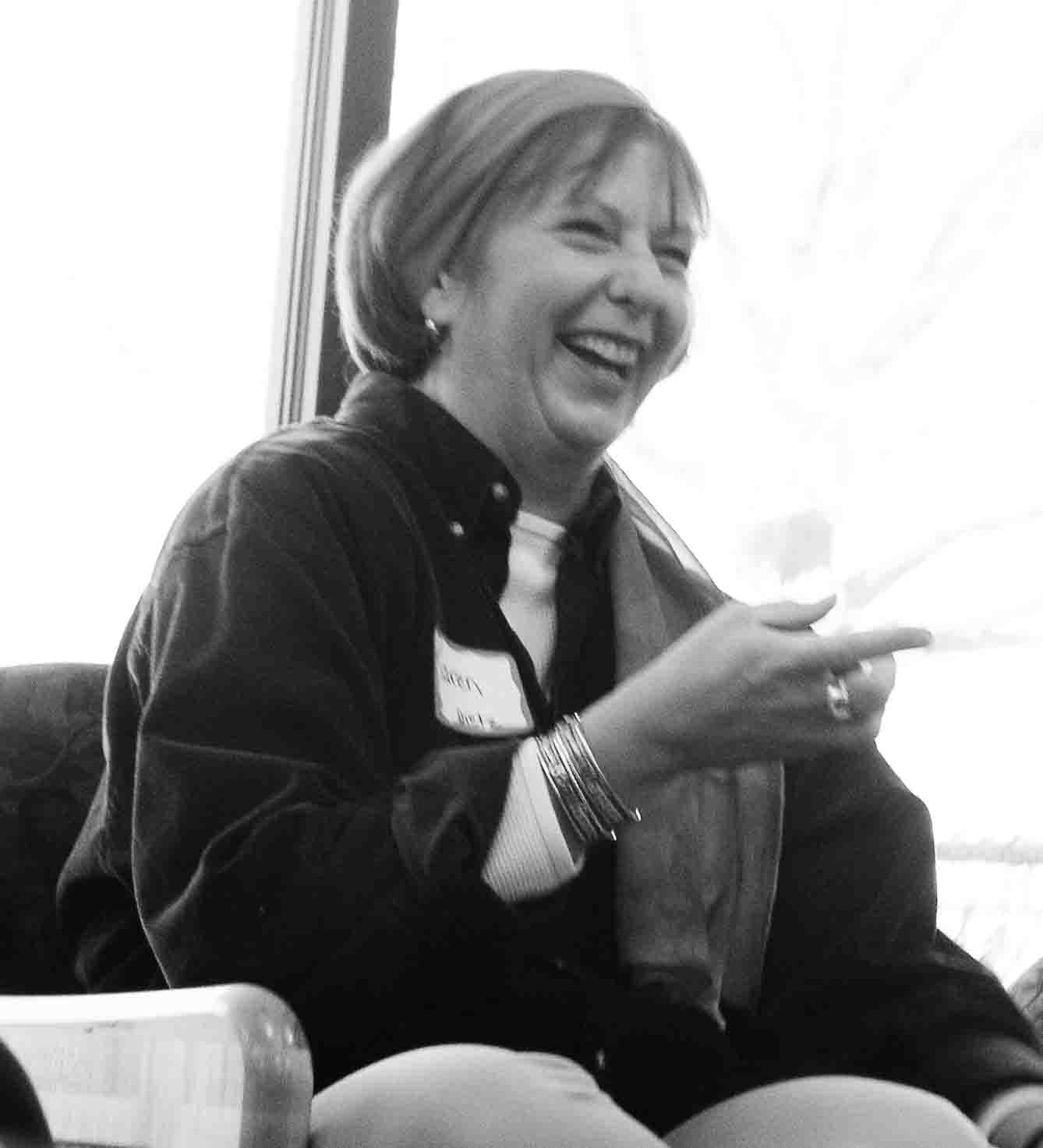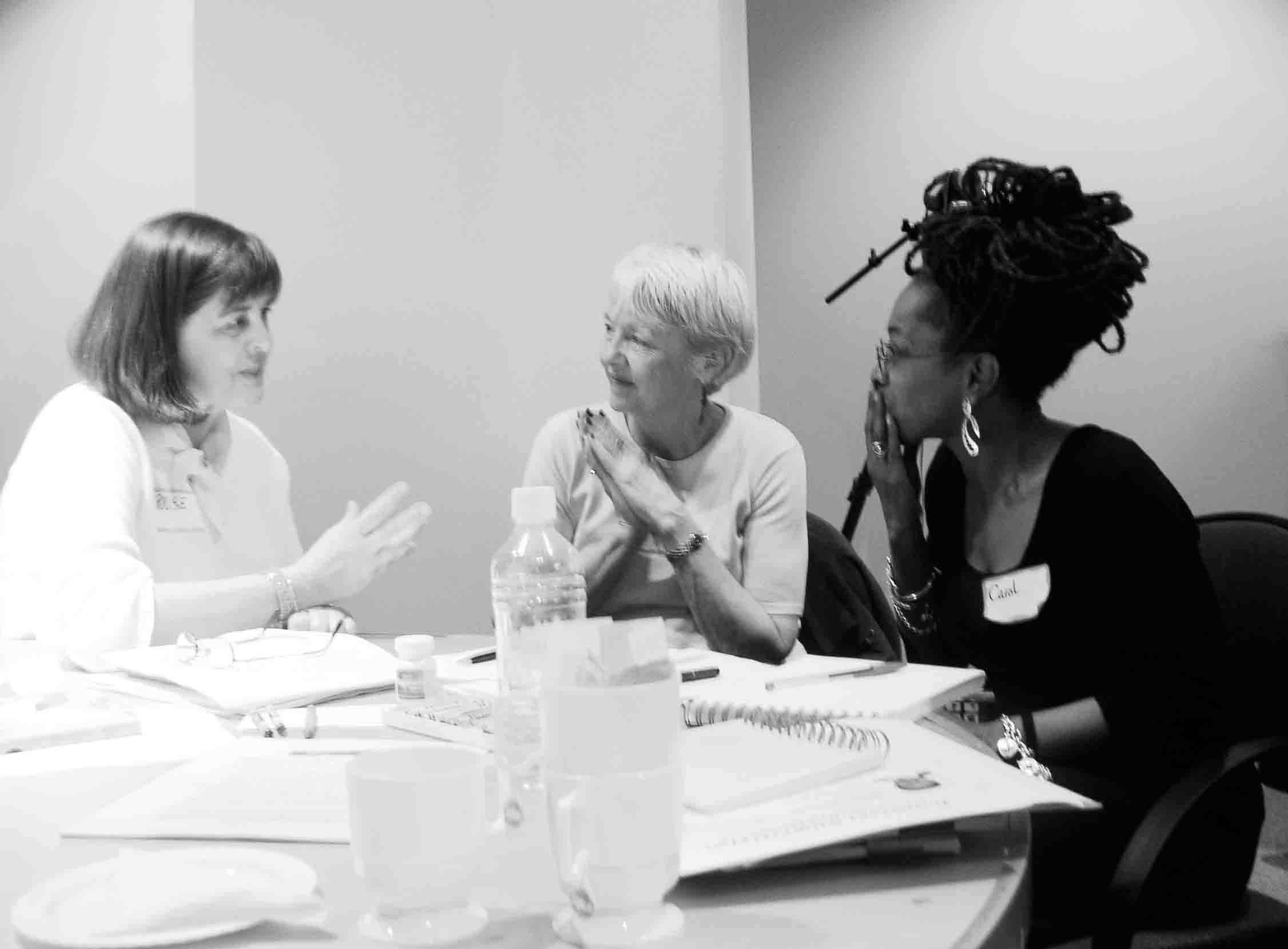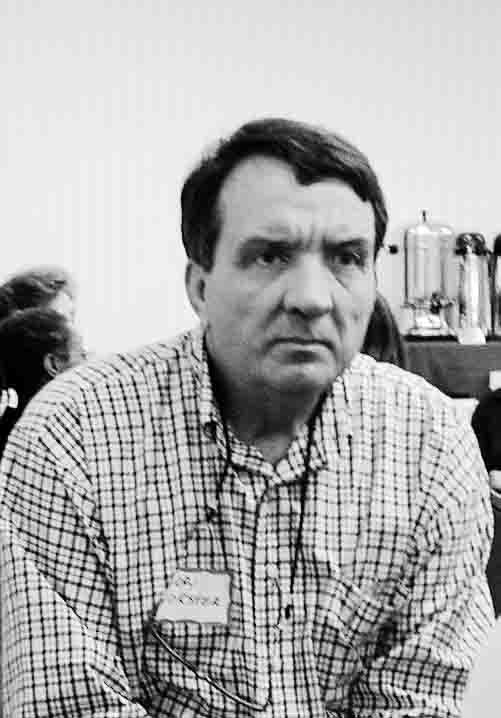|
|
April 12, 2003 Madelyn Blair Smithsonian Associates 2003 |
|
[
Introduction ] [
Jumpstart Storytelling ] [
Values ] [
Putting Story to Work ] [
Future
Stories ] [
Springboard
Stories ]
[ Seth Kahan ] [ Alicia Korten ] [ Rob Creekmore ] [ Madelyn Blair ] [ Steve Denning ] [ Paul Costello ] [ Chronology of Storytelling ] [ Golden Fleece Group ] [ Dave's Story ] [ Preparing the story ] |
|
Madelyn Blair Transcript of the April 12, 2003 session at the Smithsonian Associates |
| Steve Denning's Introduction
Madelyn Blair's Presentation One Year Later Characteristics of a Future Story Creating Our Future Story Story #1: The Grant Story #2: Reforming Government Story #3: Storytelling at the UN Story #4: Becoming a Believer Story #5: The Red Shoes Story #6: Acknowledging Story #7: Connections Story #8: Story Without Words Paul Costello's Commentary STEVE
DENNING'S INTRODUCTION: |
| this amazing thing that we human beings have developed.
How do we use that for constructive purposes in an organization?
I stumbled on this almost by accident, as I tell the story in my book,
The Springboard. I was trying to do something, and nothing else worked.
I stumbled on the power of a story to spark ideas and action in a very
difficult change-resistant organization. But once I’d found that, I
discovered that storytelling actually has other dimensions that I hadn’t
been aware of. So it’s certainly both things. It is
a tool; and as a tool, it can perform wonders – things that nothing
else can do. But it also has other dimensions, linked values, and identity,
and so on. And we’re trying in the workshop both these aspects. So this
afternoon is very much in the pragmatic or tool track, but nevertheless
with a tinge of wonder (laughter) that something as simple and
familiar as a story can move these huge seemingly immovable and invulnerable
organizations. How is that possible? I always feel a sense of wonder
that such a simple thing could have such powerful effects.’ This afternoon, we are going to start with Madelyn Blair. She is a person who also has many facets. At one point, she worked in the World Bank. We have that in common. And she is the tallest person I know. She has her head in the clouds and her feet firmly planted on the ground. (laughter) She is someone who is immensely practical, focused, results-oriented, and sticking to the schedule. But at the same time, she’s also a dreamer. Someone who can cause a whole group of people to dream. And this is what a lot of storytelling is about. There’s a Brazilian proverb: “When we dream alone, it’s just a dream. But when we dream together, it’s the beginning of a new reality.” What Madelyn can do for us is to help us to dream together and create a new reality. So without further ado, Madelyn Blair. (applause) |
| That’s basically how the manager said to me: “Can you
help us do something here – in one day?” (laughter)
ONE DAY!!! |
| I began the day at ten o’clock. Did I tell
you it started at ten o’clock. It was ending at four o’clock. (laughter)
One day. (laughter) We started at ten o’clock, and I said, “I want you to think back to the last year. I want you to think about a time when you were doing something so exciting.” Now I could tell by the looks on their faces that, yeah, o.k. it was a problem, but they we were willing to give it a shot. So I said, “Now I want you to tell the story of that time. I want you to tell it to the group.” Well, about an hour later, we had forty beautiful stories out on the table. I mean, we had skills! We had talents! We had interests! It was great! It was this lovely pile of things that we could work |
| So they come towards the door, and his wife can hear these whoops of laughter, punctuated also by moments of silence, and some murmurings. And she’s looking around thinking this is really going to be weird. And they come in. They’re a little bit late. They’re standing near the back, but they’re near a table. And the people are already engaged in conversation and she’s hearing their stories. And suddenly their stories are about fathers. And suddenly Jack’s wife turns to him and says, “That’s a story? I didn’t know |
| that was a story?” And Jack says, “You can whisper.
You’re disturbing the people.” And after a few more minutes, she says, “You know what? I’ve really been thinking about my father.” There are tears coming down her eyes. “We’ll talk later.” Soon, there’s a break in that exercise, and another one begins. And it’s hosted by someone named Madelyn Blair. And Jack’s wife says, “Who is that?” ‘ And Jack says, “Just listen!” So Madelyn Blair starts to talk about this impossible task of reorganizing an organization one day, and Jack’s wife’s eyes almost roll through the back of her head. But she listens and Jack says, “Please, just listen.” And by the time the conversation is over, the presentation is finished, she was nodding her head and as they left, Jack’s wife is chattering a great deal, but it’s a different kind of chattering. She says, “You know what? I haven’t told my grandchildren about my father. And I really need to do that. And by the way, I also think I want to call Madelyn Blair.” (laughter, applause) |
 |
In fact, there has been such a boom in the economy, because of the manufacture of red shoes. And we’ve all been telling our stories with our red shoes on. These stories are all about the power of people connecting, and some of these stories have actually been used, and have become ambassadors for global peace. So we’re looking at the fundamental change, also in the attitudes that has happened through the power of storytelling and the ability to see possibilities through the stories, and looking at the positive side and the benefits, of how stories have changed us and our organizations, and our social culture. And we’ve become open to new ideas, in our work with stories, and how we’ve been sharing those with others. (applause) |
 |
 |
thundering hoofbeats, from the sound
of all the people trying to get in here next year. So manageability
came to mind. So we provided a structure to capture all the creativity
and not let it get lost. So that was a big thing – the planning. We
didn’t get it done in twenty minutes. The planning would have to start
now among all the established leaders, and adding on the additional
ones, to take this and shape it, the rest of the way. Structure-wise,
we thought there were three key elements: · Making the core values visible through our stories, giving us all something to take home and we said, “Yes!! That’s why this is worth doing!” · Then tools. Everybody wonders about it. They’re not sure whether this will work or not. It did work. We need examples to take back. This did work and why. This didn’t work, but it could work if we did this. |
| · Lastly, connections. I don’t know whether we need a bigger room. Or video-conferencing. Some screens? But we need connections. I walked the Mall during lunch. This is a great place for a core group. The values of our country are all around on the outside, the stories that brought those to light. We need a structured way to ensure that we will connect with the geographically diverse communities that we spawn. (applause) |
| STORY
#8: STORY WITHOUT WORDS Participant (Ann Orban) I’m going to tell a story without words. (Ann, Seth, Rob, Madelyn and Steve play out a short ritual) |
|
THE ROLE OF WOMEN IN THE FUTURE STORY
In Northern Ireland where I work, it’s the women, it’s the mothers, who nurture the future stories of the next generation. And you know, in this city here, where there are families that have broken apart, and put children’s futures at risk, how very very often, and I don’t want to sound sexist here, but how very very often, it’s the mums and the grandmums and the aunties who nurture the future stories to the rising generations. I think that in the field of story and story practice, it’s well worthwhile looking at some of the wonderful writing and research done by women writers and feminist theorists and feminist practitioners who teach us so much about this field which is evolving here. THE
TOOLS OF NARRATIVE THERAPY
THE FUTURE STORY IS HAPPENING ALL OVER Go to the next session on April 12, 2003: Steve Denning on Springboard Stories |

